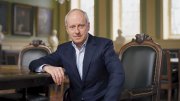The U.S. Department of Education’s promised college-ratings system (aimed at helping families make informed decisions about access, affordability, and student outcomes) doesn’t have many friends on the nation’s elite, selective campuses. President Drew Faust, for example expressed her reservations in a Washington Post interview last year. “Is it all going to be about how much more money an individual makes with a college degree?” she worried. “I think these should be very complex portraits of institutions,” not reducible to a “simple metric.”
But simple metrics may help many families. The ratings, The Boston Globe editorialized, have “enormous potential to temper the allure of shiny new facilities and big names with the simple facts of affordability and career outcomes.” Even the economic metrics may be improved: two Brookings Institution scholars recently released “Beyond College Rankings: A Value-Added Approach to Assessing Two- and Four-Year Schools.”
Rather than dismissing measurements they find inadequate, elite institutions’ leaders might enrich the debate by adding to it something they are learning more about: what kinds of teaching are most effective. In other words, what works educationally for students and their families investing time and treasure in the classroom.
The University has a $40-million Harvard Initiative for Learning and Teaching, and a $30-million investment in online education through HarvardX. Both report to a vice provost for advances in learning, and their work is tied to a robust research effort. The first online reports were about who signs up, but much deeper studies are under way. The faculties conduct complementary programs: the Harvard Kennedy School’s Strengthening Learning and Teaching Effectiveness initiative has examined what students know before and after a course (and their first year of master’s studies), and links the findings to teaching, instructor training, and assessment.
The potential for such research to improve education at Harvard is obvious. Its possible application to the national discussion of higher education—by whatever means families and students pursue it—makes the case all the more compelling.
* * *
Staff writer Stephanie Garlock concludes her service with this issue (see her coverage of online learning, and of College dean Rakesh Khurana). She now heads from journalism toward graduate and professional school. We will miss her as an excellent colleague and reporter, and extend our warm best wishes in her new pursuits.
~John S. Rosenberg, Editor








